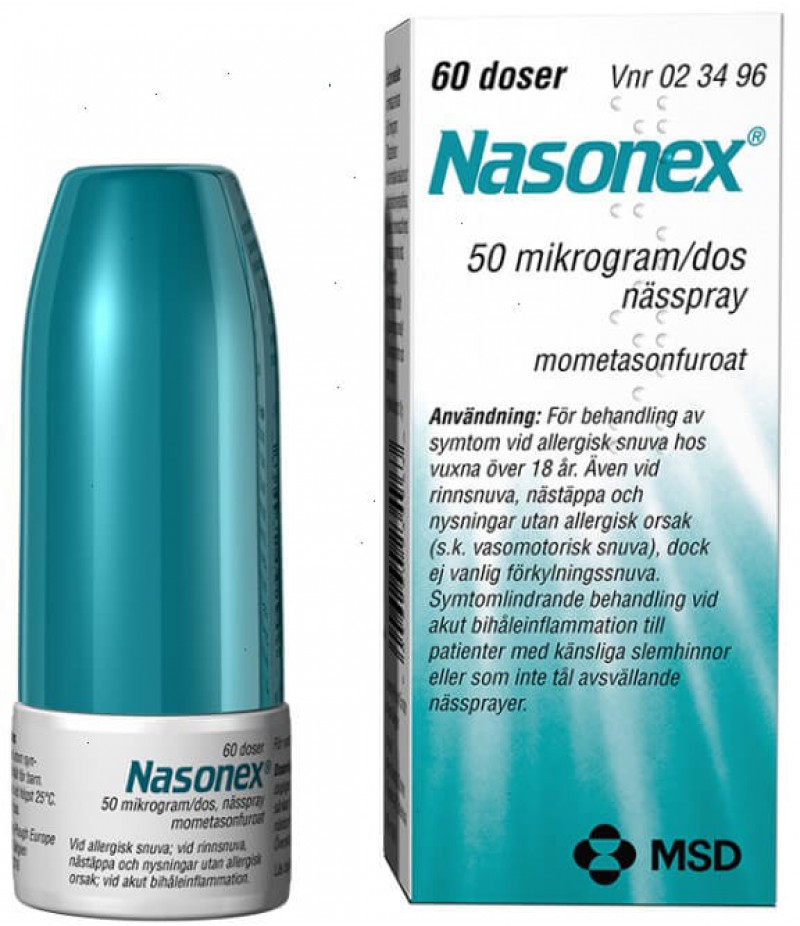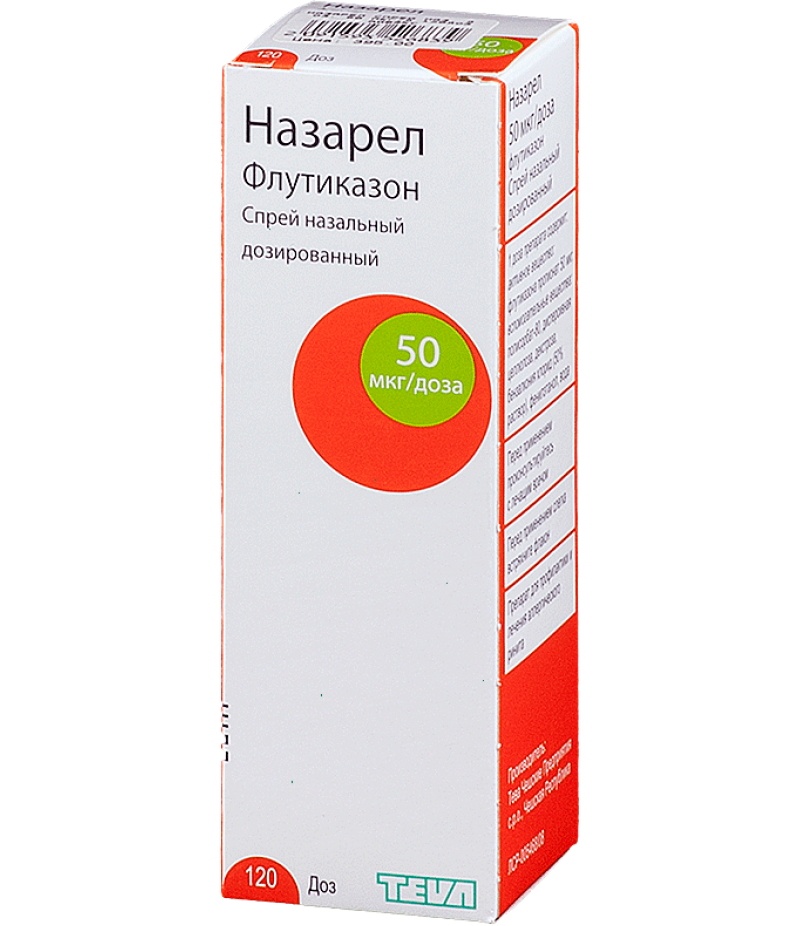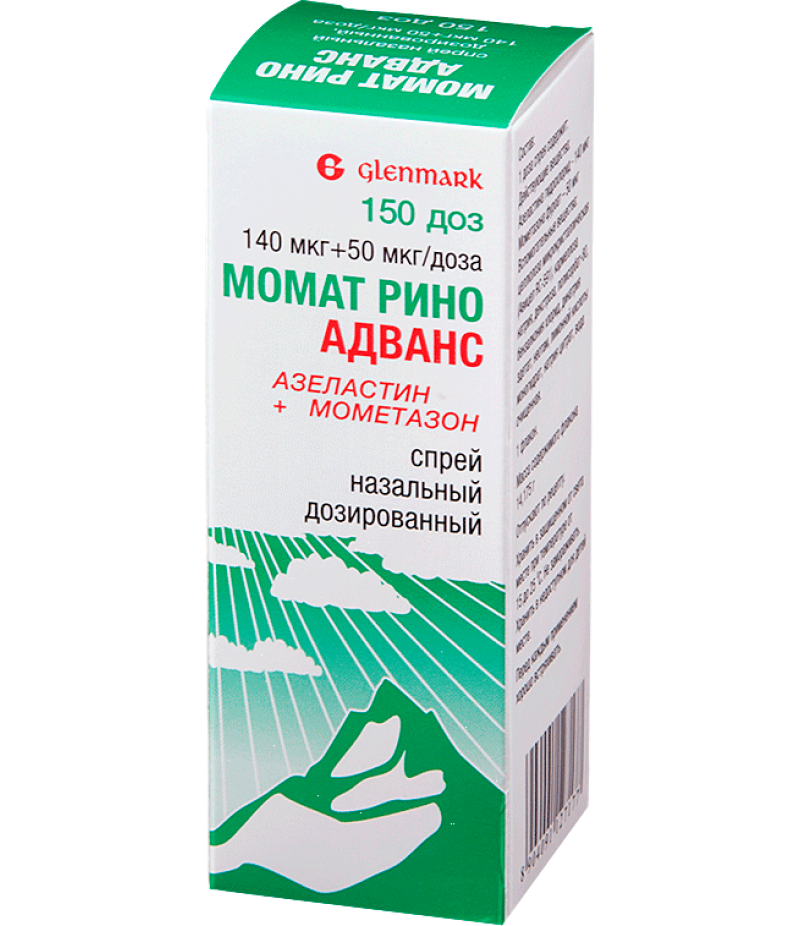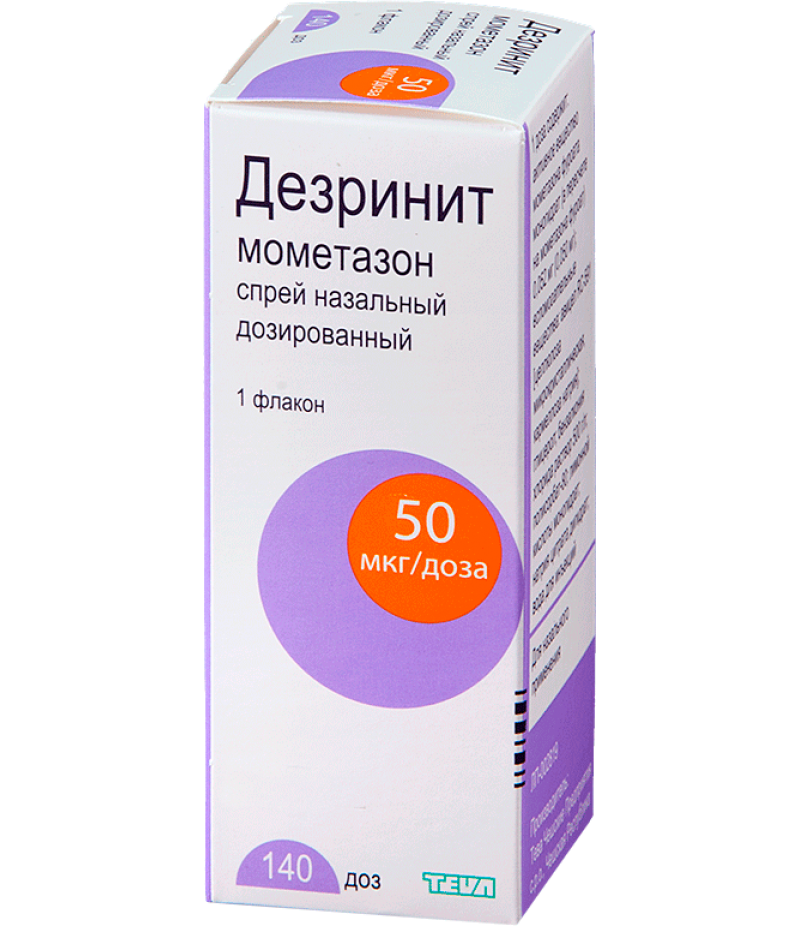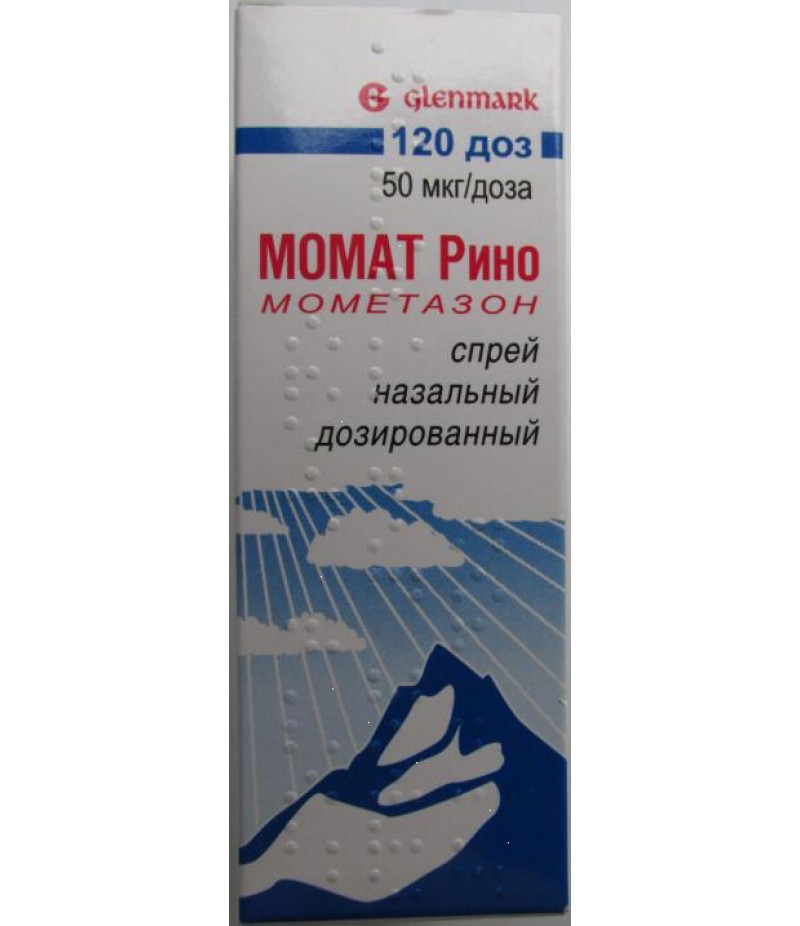Nasonex spray 50mcg/dose 60doses
- $26.58
- 3 or more $25.90
- Availability:In Stock
Nasonex instruction for useReed more and buy Nasonex on this pageCompositionThe composition of one dose of the spray includes 50 μg of anhydrous mometasone furoate and auxiliary components: dispersed cellulose (sodium carboxymethy..
Tags: spray
Nasonex instruction for use
Reed more and buy Nasonex on this page
Composition
The composition of one dose of the spray includes 50 μg of anhydrous mometasone furoate and auxiliary components: dispersed cellulose (sodium carboxymethylcellulose and MCC), glycerin, citric acid, polysorbate-80, sodium citrate dihydrate, benzalkonium chloride solution, purified water.
Form of issue
Dosage spray Nasonex Sinus. Polyethylene bottles 10 g, packing number 1. Each bottle is equipped with a protective cap and a nozzle-sprayer. The contents of the vial are designed for 60 doses, each containing 50 μg of active substance.
Dosage spray Nasonex. Polyethylene bottles 18 g, package number 1. Each bottle is equipped with a protective cap and a nozzle-sprayer. The contents of the vial are designed for 140 doses, each containing 50 μg of active substance.
The contents of the vial is an opaque suspension of almost white or white color.
pharmachologic effect
The drug has anti-inflammatory activity and has an anti-allergic effect.
Pharmacodynamics and pharmacokinetics
Nasonex - hormonal or not?
The active substance of the spray is a synthetic GCS for local (inhaled) use, therefore, the drug Nasonex is hormonal.
Pharmacodynamics
A special feature of mometasone furoate is its ability to relieve inflammation and inhibit the development of an allergic reaction even when used in doses that do not develop systemic effects.
The substance inhibits the release of inflammatory mediators, stimulates the production of lipomodulin, which is an inhibitor of phospholipase A. This reduces the release of arachidonic acid and, accordingly, suppresses the synthesis of the products of its metabolism (Pg and endoperoxides).
Reduces the formation of the chemotaxis substance, affecting the "late" (delayed) allergic reactions, and also prevents the development of an immediate allergic reaction.
Studies with provocative tests with application of antigens to the nasal mucosa showed that Nasonex nasal spray exhibits high anti-inflammatory activity both at early and late stages of allergic reaction.
Confirmation of this (in comparison with placebo) is a decrease in the activity of eosinophils and the level of histamine, as well as a decrease in the number of neutrophils, eosinophils and adhesion proteins of epithelial tissue cells (relative to the baseline level).
Approximately one third of patients (28%) with seasonal allergic rhinitis had a pronounced clinical effect within twelve hours after the first inhalation. Half of the patients improved on the average within 1.5 days (35.9 hours).
In addition, in patients suffering from seasonal rhinitis, the drug showed significant effectiveness in reducing the severity of eye symptoms (zed, lacrimation, redness).
Pharmacokinetics
Bioavailability of mometasone in local application is negligible (does not exceed 0.1%).
The substance is practically not found in the blood plasma. Suspension is very poorly absorbed from the digestive canal, and a small amount that can be swallowed and has time to absorb is subject to active metabolism even before excretion.
Metabolites are excreted mainly with bile and, in small amounts, with urine.
Indications for use
Indications for the use of Nasonex are:
allergic rhinitis (seasonal or year-round) in children, adolescents and adults;
exacerbation of chronic sinusitis (the drug is prescribed as an adjunct to antibiotic therapy) in adolescents and adults;
prophylaxis of a moderate / severe seasonal allergic rhinitis (it is best to start spraying at least 2 weeks before the expected start of the dusting period).
Children spray Nasonex from allergies appointed from two years of age. For the treatment of sinusitis in pediatrics it is used in children over the age of twelve.
Contraindications
Contraindications to the appointment of Nasonex are:
intolerance to any of its components;
the presence of an untreated / untreated local infection, provided that the mucous nasal cavity is involved in the process;
active or latent tuberculosis infection of the respiratory tract;
an untreated bacterial, systemic viral or mycotic infection, as well as an infection caused by the herpes simplex virus with eye damage (in some cases, the drug may be prescribed exceptionally as directed by the treating doctor).
If a patient in the recent past suffered a nasal injury or a nose operation, the use of the spray is contraindicated until the wound is healed.
Side effects
In the treatment of allergic rhinitis in adults are possible:
pharyngitis;
nasal bleeding (bleeding may be obvious or in the discharge of mucus from the nose there are impurities of blood);
irritation of the mucosa in the nasal cavity;
a burning sensation in the nose.
Children who receive Nasonex for the treatment of an allergic rhinitis, were noted:
bleeding from the nose;
irritation of the nasal mucosa;
headache;
sneezing.
Nose bleeding usually stops on its own and is not severe. They occur with a frequency comparable with the frequency of their occurrence when using placebo (5%), but less than or equal to using other glucocorticosteroids for intranasal use.
Nasonex analogs were used for active control, when used, the incidence of bleeding from the nose was up to 15%.
Other undesirable reactions in the group of patients receiving mometasone developed at the same frequency as patients who received placebo.
When the drug is prescribed for sinusitis / sinusitis, when Nasonex is used as an aid for removing the swelling of drainage holes, reducing the secretion and facilitating the removal of mucus from the paranasal sinuses, adolescents and adults were recorded:
pharyngitis;
headache;
irritation and / or burning of the nasal mucosa.
Bleedings were moderately severe, and the incidence of their occurrence with the use of the spray was only slightly higher than the frequency of their occurrence when using placebo (5% and 4%, respectively, for Nasonex and placebo).
It is extremely rare when using endonasal GCS, there have been cases of development of ocular hypertension or perforation of the septum of the nose.
Spray Nasonex: instructions for use
General recommendations
The drug is intended for intranasal administration (used in the form of inhalations) of the suspension contained in the vial. The procedure is carried out using a dispensing nozzle, which is completed with each bottle of Nasonex.
Before the first use of the spray, it is "calibrated", for which 6-7 times the dosing device is pressed. "Calibration" allows you to establish a stereotyped drug delivery. At the same time, each pressing of the dispenser provides a release into the nasal cavity of 100 mg of the suspension, which contains 50 μg of a chemically pure active substance.
Before use, the vial should be vigorously shaken every time.
Instructions for use Nasonex / Nasonex Sinus for allergic rhinitis
The standard prophylactic / therapeutic dose for adolescents over the age of twelve and adult patients (including the elderly) is two inhalations per each nasal passage once (200 μg mometasone per day).
After achieving the desired therapeutic effect, the dose is reduced to 100 μg / day. (one inhalation in each nasal passage once).
If the desired effect is not achieved with the therapeutic dose, the dose can be increased to 400 μg / day. That is, the patient should once do up to four inhalations in each nasal passage. Reducing the severity of symptoms of allergic rhinitis is an indication for dose reduction.
Clinical improvement after first use of mometasone is usually noticeable within 12 hours after the first inhalation.
Children under the age of 11 years from allergies are advised to use one inhalation in each nasal passage once. The total dose is 100 mcg / day.
Since Nasonex is not a drop in the nose, but a spray, when carrying out inhalation, the head should be kept straight, without tipping it back.
Instruction for Nasonex Sinus and Nasonex with exacerbation of sinusitis
For patients over the age of twelve, including the elderly, the recommended therapeutic dose is two inhalations per nasal passage of 2 r. / Day. The total dose is 400 mcg / day.
The drug is used as an adjuvant, supplementing the main treatment.
If clinical improvement can not be achieved using the drug in a standard dosage, the dose can be increased to 800 μg / day. (four inhalations in each nasal passage 2 r./d.). After reducing the severity of symptoms, the dose should be reduced.
After 12 months of Nasonex, there was no evidence of atrophy of the nasal mucosa, in addition, mometasone tended to improve the histological pattern when examining a sample of nasal mucosa tissues.
Nasonex in adenoids
The increase in adenoids is a fairly frequent complication of an allergic rhinitis in young children. The appointment of children with adenoid nazoneksa allows you to remove swelling and often prevent the need for surgical intervention.
Reviews about Nasonex in adenoids indicate that the effect is achieved by suppressing lymphoid tissue, but it takes a long time to reach it. In addition, with a pronounced inflammatory process, the drug is not very effective.
As a hormonal spray, it also suppresses local immunity, and after that, inflammation on the adenoids can resume. External manifestations of inflammation - the appearance of mucus, flowing down the back wall of the pharynx.
To stop this condition, doctors recommend to undergo a course of anti-inflammatory treatment of adenoid vegetations. Effective in this case may be inhalation through a nebulizer with Cycloferon, supplemented with nasopharyngeal washings using the nasopharyngeal shower, which are performed in an ENT room.
Dr. Komarovsky recommends, as a supplement to the treatment of adenoids, to revise the organization of the child's lifestyle. Since one of the reasons for the proliferation of adenoids is a decrease in immunity, it is very important that the immune system functions as best as possible.
To minimize the risk of increasing the size of the pharyngeal tonsils, the child should eat right, walk in the fresh air, temper, play sports and as little as possible contact with household chemicals and dust.
After the inflammation disappears, it is usually not necessary to repeat the course of intranasal application of GCS.
Overdose
Overdosing mometasone develops with prolonged use of the drug in high doses, as well as in the case of simultaneous use of several GCS. As a result, oppression of the hypothalamic-pituitary-adrenal system is possible.
Systemic bioavailability of mometasone is extremely low, so it is unlikely that a deliberate / accidental overdose will require any other measures than monitoring the patient, followed by continued use of Nasonex at the recommended dose.
Interaction
Patients well tolerate combined therapy with Loratadin. Drug interactions with other drugs have not been studied.
Storage conditions
The bottle with the spray should be stored at a temperature of 2-25 ° C. Freezing of the drug is unacceptable.
Shelf life - three years.
special instructions
The vial is calibrated. If the drug is not used for more than 14 days, a recalibration is required.
With prolonged (from several months) application of the spray, you should undergo periodic examinations with the otolaryngologist for possible changes in the nasal mucosa. In case of local mycotic infection of the pharynx / nose, you should stop using Nasonex or undergo special treatment.
Particularly careful medical supervision is required by patients who use Nasonex concomitantly with systemic SCS, as well as patients to whom the drug was administered after the cancellation of GCS therapy.
The abolition of systemic SCS often leads to adrenal insufficiency, which may require appropriate measures. When switching from systemic GCS to the use of nasal spray in some patients, symptoms of cancellation of SCS may occur:
joint and / or muscle pain;
depression;
feeling tired.
The change of therapy may cause symptoms of previously developed allergic diseases (for example, eczema or allergic conjunctivitis), which were previously masked by systemic glucocorticosteroid therapy.
In patients who receive treatment with GCS, immune reactivity is potentially reduced. For this reason, they should be warned about the increased risk of infection in the event of contact with an infectious patient (including those with measles or chickenpox), and the need to consult a doctor if such a contact occurs.
In the course of placebo-controlled trials in children, when the drug was administered at a dose of 100 micrograms throughout the year, growth retardation in children. Also, with prolonged use of Nasonex, there are no signs of suppression of the function of the hypothalamic-pituitary-adrenal system.
On the cell culture, mometasone furoate showed tenfold greater activity compared to other steroids, including Betamedeson, Dexamethasone, beclomethasone dipropionate, to suppress the synthesis / release of interleukins (IL) 1, 5 and 6, TNF-α, IL-4, IL- 5 and Th2-cytokines from human CD4 + T cells.
By suppressing the production of IL-5, the drug exhibits six times more activity than Betamethasone and beclomethasone dipropionate.
Nasonex during pregnancy
After the drug is injected into the nasal cavity at the maximum allowable therapeutic dose, its active substance is not detected in the blood even at the minimum concentration.
Thus, its potential reproductive toxicity (including effects on male / female fertility and effects on the developing organism) is negligible.
However, due to the fact that well-controlled studies of the effects of mometasone furoate on the body in case of its use during pregnancy and during lactation have not been conducted, the spray should be administered to pregnant women, mothers who are breast-fed and women of childbearing age only in those cases where the expected effect of therapy justifies the potential risk to the fetus / newborn.
Newborn infants whose mothers received SCS during pregnancy should be examined for possible hypofunction of the adrenal cortex.
Reviews about Nasonex
Reviews about Nasonex Sinus / Nasonex are mostly good. More than 80% of the patients who used the drug noted a very rapid improvement, calling the agent an indispensable assistant in the fight against seasonal and year-round allergic rhinitis.
Moreover, some patients who "sat" on vasoconstrictor for years, say that it was the spray Nasonex that helped them get rid of this dependence.
However, there are those to whom the drug did not fit or did not give the expected result, which may be due to the individual reaction of the body to the prescribed treatment.
A separate group of reviews is reviews about Nasonex for children. Children spray usually prescribed for adenoids, if the lymphoid tissue is a consequence of allergies. Despite the fact that the drug is hormonal, moms believe that it is better to take a course of treatment for them than to send a child to an operation.
If we talk about the effectiveness of Nasonex in adenoids, then the positive dynamics becomes noticeable quickly enough, however, only if the treatment scheme is chosen correctly.
The big plus of the drug is that its active substance is absorbed in negligibly small amounts and does not have systemic activity. Due to this, Nasonex, unlike most analogues, can be used from the age of two.
It should be noted that there are - although extremely rare - responses in which mothers who used Nasonex for the treatment of a child complain that after the end of the course of treatment, all the old drugs that were prescribed to the child before do not work and do not give even temporary relief.
The doctors' comments on Nasonex suggest that endonasal SCS does not cure completely polypous rhinosinusitis and allergic rhinitis, but is able to completely and quickly quash allergic rhinitis symptoms and significantly delay the recurrence of nasal polyps.
Preparations of this group are the only medicines whose clinical efficacy in case of chronic polypous rhinosinusitis is confirmed by evidence-based medicine.

